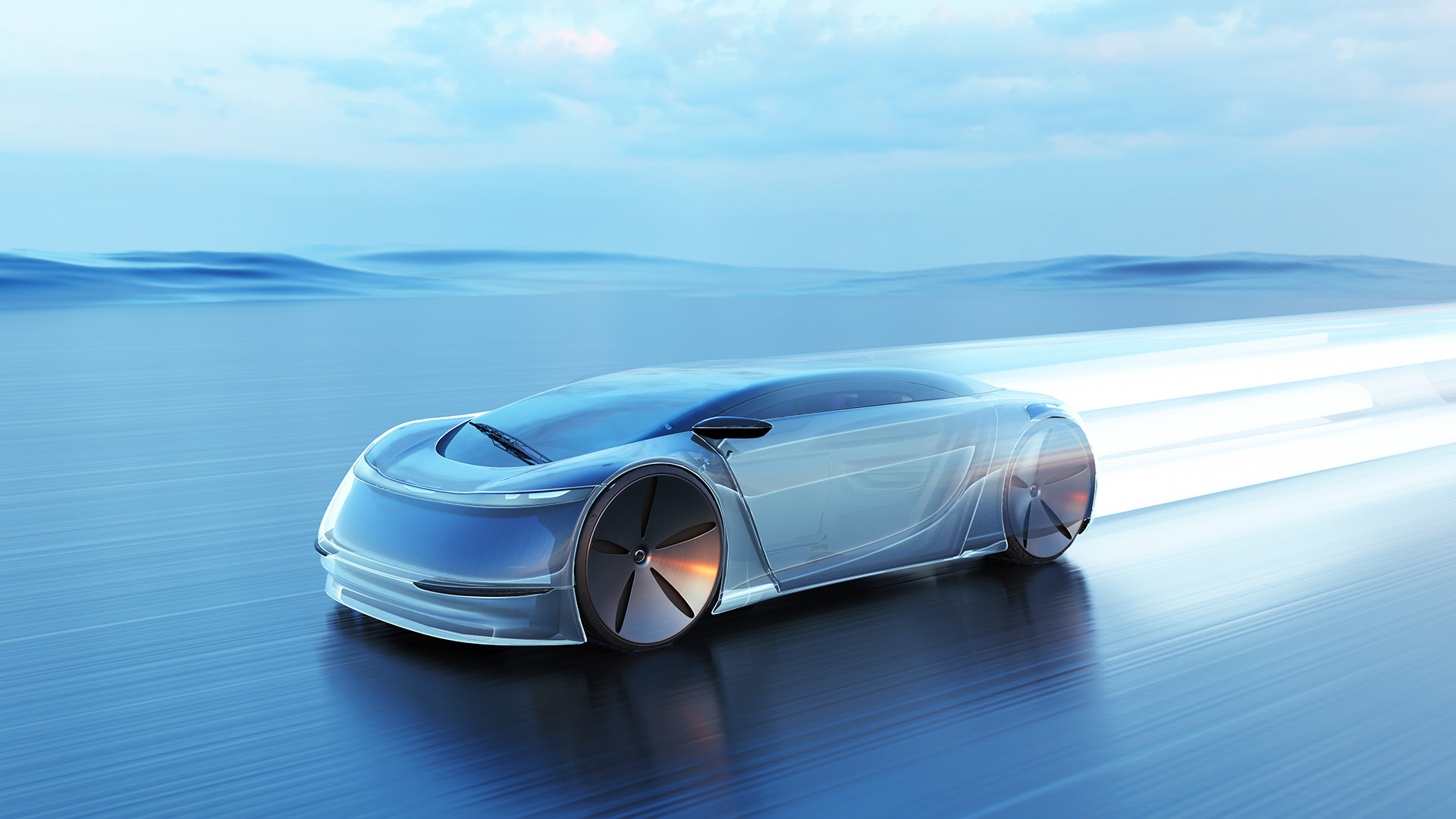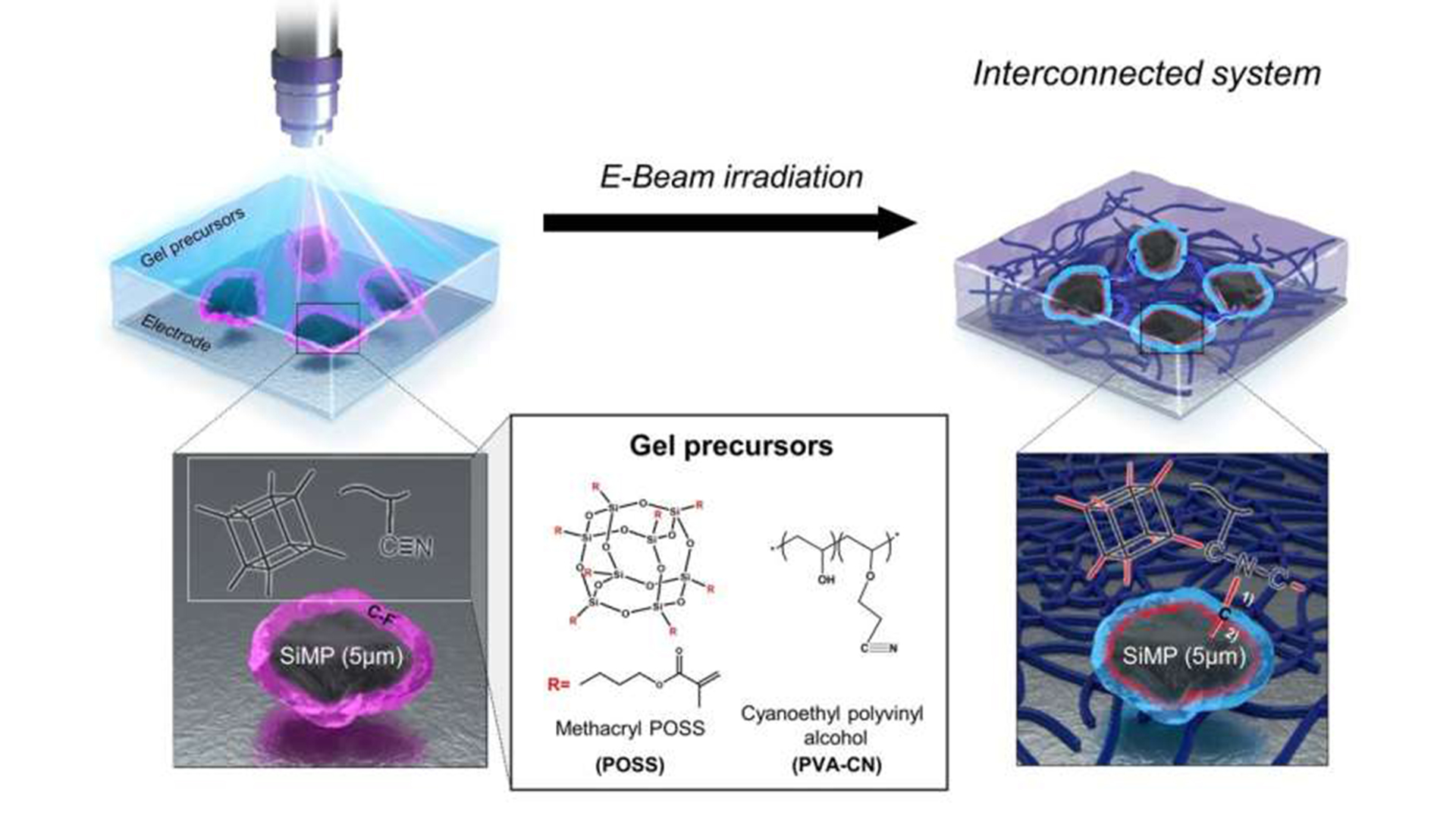Future electric cars could go more than 600 miles on a single charge thanks to battery-boosting gel
By using gel, researchers have found a way to incorporate silicon into batteries while negating its destructive tendency to expand — meaning future EVs could use the technology to go much further on a single charge.

Electric vehicle (EV) range anxiety could soon be a thing of the past thanks to a breakthrough in battery technology, which could give EVs a range of more than 620 miles (1,000 kilometers).
Today's EVs have a maximum range of 300 miles (480 km) on average. Even the longest-range electric car, the Lucid Air, runs out of charge after about 500 miles (800 km).
But in a new study, researchers used tiny silicon particles and a gel-based electrolyte to tap into the high-charge capacity of silicon anodes in lithium-ion batteries. The scientists published their findings on Jan. 17 in the journal Advanced Science.
Charging works inversely, with positive lithium ions returning to the anode and electrons flowing back across a circuit to the terminal as it gains a positive charge. When no more ions can flow to the node — now technically a cathode — the battery is considered fully charged.
Silicon has been widely explored as a candidate for the anode in lithium-ion batteries because it can hold up to 10 times as many lithium ions versus equivalent graphite anodes — which are used in most Lithium-ion batteries today. But silicon expands by up to three times its size when receiving a charge, which can damage the battery. Nanometer-scale silicon can mitigate this problem, but such a system requires a complex and expensive production process.
However, in the new study, the scientists opted for micrometer-scale silicon particles linked to an elastic gel electrolyte that disperses the internal stress caused by an expanding silicon anode. This prevents battery degradation without compromising conductivity.
As micrometer-scale particles are 1,000 times larger than nanometer equivalents, this new battery system paves the way for high-charge capacity silicon anodes without the costly production.
Sign up for the Live Science daily newsletter now
Get the world’s most fascinating discoveries delivered straight to your inbox.
"We used a micro-silicon anode, yet we have a stable battery. This research brings us closer to a real high-energy-density lithium-ion battery system," study co-author Soojin Park, a professor of chemistry at the Pohang University of Science and Technology in South Korea, said in a statement.
Stretching silicon
To make this silicon-gel electrolyte system work, the scientists irradiated a gel-based polymer with an electron beam to form covalent bonds between the micrometer-scale silicon particles and the electrolyte.

By linking the anode and the electrolyte it allows the elastic nature of the gel to absorb and dissipate the stress of the silicon expansion. The gel electrolyte can also mitigate some of the cracking that occurs when silicon expands, thus improving the structural stability of the silicon electrode; theoretically, this should lead to longer-lasting lithium-ion batteries.
The overall result was a lithium battery with "an approximate 40% improvement in energy density" and an ion conductivity similar to batteries using a liquid electrolyte. In simple terms, that means a Lithium-ion battery that can hold more positively charged ions — essentially having a greater energy capacity — while preserving efficient energy transfer.
In real-world use, it could mean a longer battery life for consumer devices, while EV batteries could have a range exceeding 620 miles on a single charge. Compared with nanometer-scale silicon particles, the researchers also said a micrometer-scale silicon particle system could be more cost-effective and fit into today's production methods almost immediately.
"The integration strategy, which simply involves the application of an electron beam, can be readily implemented into existing battery production lines," the scientists said in the paper.
Roland Moore-Colyer is a freelance writer for Live Science and managing editor at consumer tech publication TechRadar, running the Mobile Computing vertical. At TechRadar, one of the U.K. and U.S.’ largest consumer technology websites, he focuses on smartphones and tablets. But beyond that, he taps into more than a decade of writing experience to bring people stories that cover electric vehicles (EVs), the evolution and practical use of artificial intelligence (AI), mixed reality products and use cases, and the evolution of computing both on a macro level and from a consumer angle.










